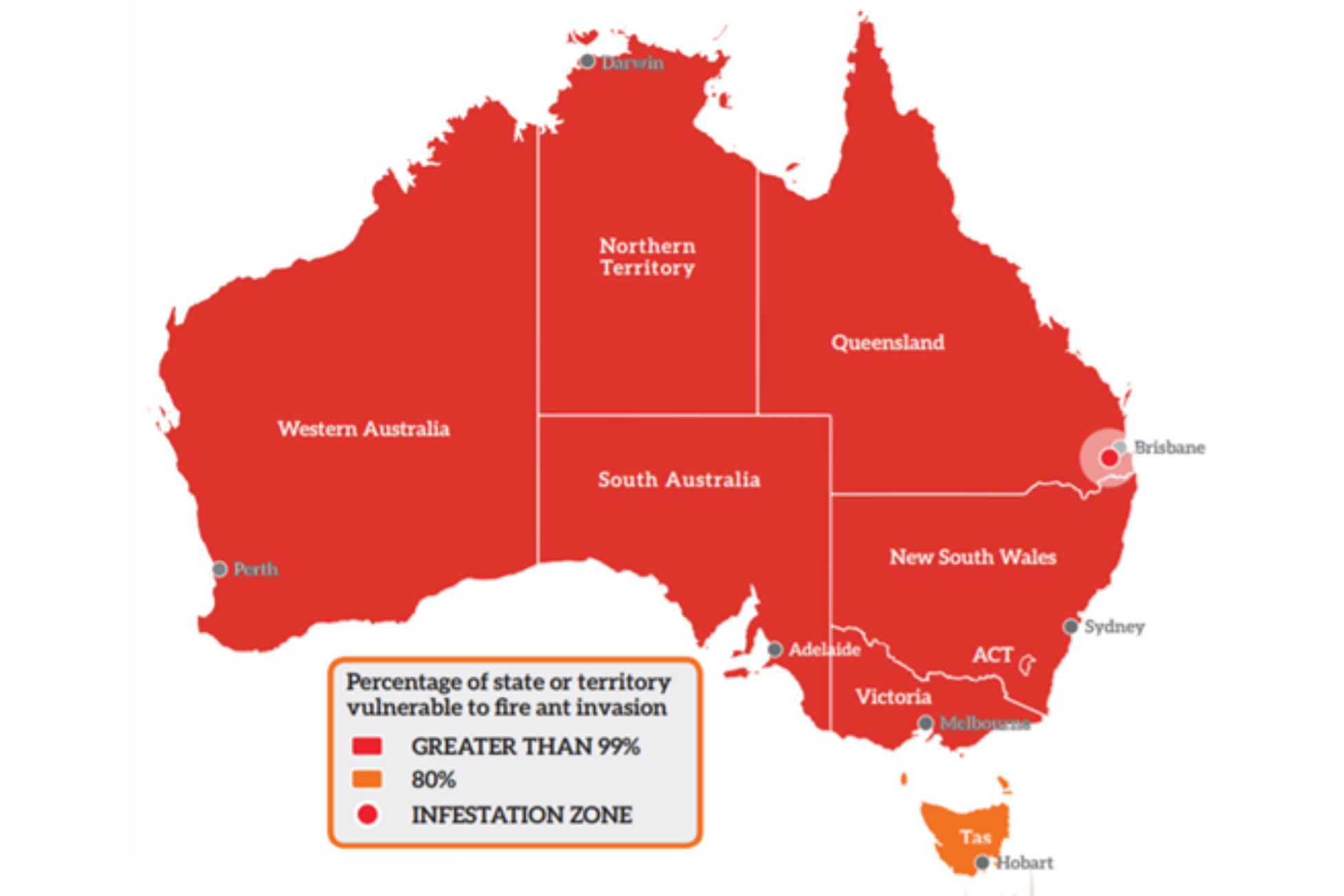Did you know we have already eradicated 7 fire ant incursions in Australia?
Fire ants were first detected in Brisbane, Queensland on 22 February 2001. It is thought that they may have arrived up to 20 years earlier.
How they entered Australia is not known but it is likely that they entered in shipping containers from America. Imported cargo poses a risk as pests can 'hitchhike' undetected.
There are many types of ants species found in Australia, but only Solenopsis invicta qualifies as an invasive fire ant.
Where in Australia could fire ants spread?
Australia's climate and lack of natural predators make it the perfect home for fire ants. In fact, the Invasive Species Council advises that more than 95% of Australia is a suitable climate for fire ants. They could inhabit almost the entire continent except for the most extreme, coldest locations.
Image courtesy of Invasive Species Council under creative commons licence 4.0
If not eradicated the impacts of fire ants in Australia will surpass the combined damage done each year by our worst pests: feral cats, wild dogs, foxes, camels, rabbits and cane toads.
Number of incursions in Australia
What is a fire ant incursion? An incursion is when invasive ants pass through our borders and manage to establish one or more colonies in Australia. The presence of these ants is considered an incursion (rather than an intercept).
We have successfully eradicated 5 separate incursions in Queensland, and one each in New South Wales and Western Australia. This highly adaptive pest has been found at every capital city port in Australia, except Tasmania.
| Location | Year | Extent | Current status |
|---|---|---|---|
| Port of Brisbane | 2001 | 470 known colonies spread over 8,300 hectares | Eradicated (2005) |
| Richlands/South East Queensland | 2001 | Initially discovered in Wacol and spread to more than 600,000 hectares from north of Brisbane to the Gold Coast | Eradication underway |
| Yarwun, Gladstone | 2006 | 14 known colonies (but possibly 100), more than 1,000 hectares treated | Eradicated (2007) |
| Port of Gladstone | 2013 | 80 known colonies spread over 4,600 hectares | Eradicated (2016) |
| Port Botany, Sydney | 2014 | 1 colony detected | Eradicated (2016) |
| Brisbane Airport | 2015 | At least 1 colony, genetically distinct | Eradicated (2019) |
| Port of Brisbane | 2016 | At least 1 colony, genetically distinct | Eradicated (2019) |
| Port of Fremantle, Western Australia | 2019 | At least 1 colony, genetically distinct | Eradicated (2023) |
Eradication can only be declared after multiple treatments and extensive human, aerial and canine surveillance over several years.

